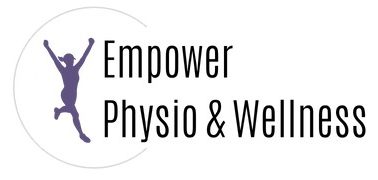What better time to talk about bone health than right now, when skeletons are hung in yards and storefronts around the city in preparation for Halloween? Whether you’re dealing with osteopenia, osteoporosis, or you just want to learn how to keep your bones strong as you age, this is for you.
Before we dive in, let’s quickly define osteopenia and osteoporosis. Osteopenia happens when bone density falls slightly below normal values. There are typically no physical symptoms but it can progress to osteoporosis, or a further decline in bone density, which increases the likelihood of fractures.
In my last blog post, I shared the important role protein plays in bulletproofing your body as you age. It’s natural for our bones to weaken over time, but since they’re living breathing tissue, they can adapt at any point in our lives! No matter how many trips around the sun you’re celebrating, it’s not too late to show your bones some love.
The facts about bone health
Research shows that 90% of bone mass is accumulated by age 20. After age 30, bone mineral density starts to decline, with a sharper decline for women going through menopause. This happens for a few reasons. Our skeletons are completely replaced every 7-10 years through the process of breaking down bone and building new bone back up. This process is called bone remodeling and allows for bones to adapt to change shape or size as they grow or repair from injury. We want more bone created than lost to maintain or increase bone density.3
Additionally, as we age, hormonal changes and accumulative cell stress are the main factors that contribute to bone loss. As estrogen and testosterone levels fall, they provide less of a signal for bone growth compared to earlier in life when those hormones are more plentiful. The aging body also has a stronger propensity to lay down fat cells as opposed to bone cells. Not cool!1
If you’ve been diagnosed with osteoporosis or osteopenia, this is not a death sentence! Remember, bone is living, breathing tissue and can adapt. It is very possible to go from osteoporosis to osteopenia, or in some cases go from osteopenia to normal bone density.
How to improve bone health through exercise
If you’re wondering how to improve bone health, it all comes down to two basic principles: exercise and nutrition. Research consistently shows that exercise is the best way to promote bone health, especially impact activity and strength training.
Impact activity is crucial for stimulating the body to increase bone mineral density. The force up through the body in response to impact is called Ground Reaction Force (GRF). This is often measured as a percentage of body weight. Here are common activities and the GRF they provide (listed as a multiplier of body weight)2
- Lunging: 1.1x
- Walking: 1.2x
- Marching in place: 1.5x
- Running: 2.6x
- 12-in step up: 2.7x
- Heel drop (standing, rising up onto the toes, and letting heels fall to the floor with an audible landing): 3.6x
- Jump squat: 3.8x
- Foot stomp (stomping in place): 4.6x
- Vertical jump: 4.7x
- Vertical squat jump: 7.1x
There are two big takeaways from this list.
- Walking does not provide much GRF to stimulate the body and increase bone density! While walking is a wonderful activity, don’t falsely think that you are building a lot of bone mass as a result.
- Heel drop and foot stomp exercises not only provide excellent stimuli for bone strengthening, but they’re also super easy and accessible to everyone. You can stomp in place while you brush your teeth or do heel drops while you watch TV. Talk about the best kind of multitasking!
If you follow my blog, you know that I am a BIG fan of strength training. Lifting weights and being strong have such a positive impact on every aspect of health. Progressive resistance training has been shown to strengthen both bone and muscle. This means that you consistently lift weights and increase the weights you use over time. Nothing changes if nothing changes, so if you keep lifting the same weight you will not continue to build strength. Be sure to practice progressive resistance training under the supervision of a physical therapist or personal trainer so you can exercise safely based on your fitness level and health status.
Why are impact activity and strength training so effective? Bone, muscle, and soft tissue respond directly to the stress they encounter. When you do impact activity, it signals to the body that it needs to be strong so it can successfully withstand future impact activity. Similarly, when you lift weights, it signals to your muscles that they need to get bigger and stronger so they can lift heavy things in the future.
On the flip side, if you live a sedentary lifestyle, your body, muscles, and bones have learned that they don’t need much strength to withstand the demands of your daily life. But then you fall, have to catch yourself, or lift something heavy and your body isn’t prepared, resulting in broken bones or other injuries. Our bodies respond to the information we give them.
How to improve bone health through nutrition
While I’ve already covered the importance of getting the right amount of protein in a previous blog post, it’s also important to focus on other aspects of nutrition like calcium, vitamin D, and vitamin K2. We all know that calcium is important for bone health and were told from childhood to drink milk for strong bones. But calcium alone isn’t enough. It needs other micronutrients in order to be effective.
Enter Vitamin K2. This vitamin activates a protein called osteocalcin. Osteocalcin takes calcium from the blood and deposits it into bone. If you are deficient in vitamin K2 (which most of the US population is), then osteocalcin isn’t activated which means calcium isn’t effectively moved from the bloodstream into bone.3 Vitamin K2 is not often found in the Western diet, even a healthy one. A full serving of leafy greens only provides 10% of your daily value of vitamin K2, therefore, supplementation is often needed.
Vitamin D is another important vitamin for bone health. Its primary role is to help with calcium absorption in the intestine. Without vitamin D, the calcium we eat or take in a supplement can’t get past the intestinal wall into the bloodstream. When this happens, the body detects that there isn’t enough calcium to function properly, so it signals calcium to be released from bone, thus lowering bone mineral density. Not good! As a result, it is recommended to consume vitamin D and calcium at the same time so the calcium can actually be absorbed. Another bonus is that vitamin D plays a role in muscle health. This will make your resistance training more effective which also boosts bone health. Double win.4
I hope you’re feeling much more educated about how to keep your bones healthy as you age. Looking for a more customized plan to combat bone density loss? Let’s chat.




My multivitamin has vitamin K, 50mcg which is 42% of the daily requirement. Is K different than K2?
The vitamin K listed on your multivitamin is the total amount of K1 and K2. We likely won’t know how much of that 50mcg is K1 vs K2 unless there’s more detail on the label.